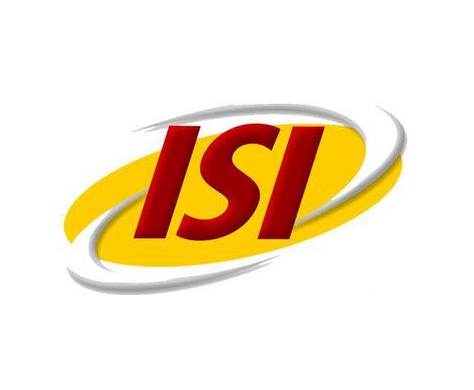دانلود رایگان مقاله لاتین صنعت فناوری اطلاعات و ارتباطات از سایت الزویر
عنوان فارسی مقاله:
تغییرات ساختاری و عوامل رشد صنعت فناوری اطلاعات و ارتباطات در کره: 1995-2009
عنوان انگلیسی مقاله:
Structural changes and growth factors of the ICT industry in Korea: 1995–2009
سال انتشار : 2016

برای دانلود رایگان مقاله صنعت فناوری اطلاعات و ارتباطات اینجا کلیک نمایید.
بخشی از مقاله انگلیسی:
3. Structural changes in the ICT industry
3.1. Output structure Fig. 1 shows changes in the output structure of the ICT industry. The ICT’s output and output share as a percentage of the entire national industrial sector, which were posted as 39.5 trillion won and 3.32% in 1995, continuously grew to 312.8 trillion won and 13.01% in 2009, an 8-fold and 4-fold increase, respectively. In the same period, the compound annual growth rate (CAGR1 ) of the ICT industry was 15.93%, which was 3 times higher than the CAGR of 5.15%, of the entire national industrial sector, indicating that the ICT industry led Korea’s economic growth (refer to Table 2). In terms of sectoral changes in the output structure of the ICT industry, the ICT service sector consistently registered the largest output until 2000, as shown in Table 2. The electronic component sector overtook the ICT service sector in 2005, and the output of the electronic component sector represented 45% or more of the ICT industry’s output in 2009. In addition, as time progressed, the growth of the ICT service sector and the broadcasting and telecommunication equipment sector gradually slowed. Additionally, the information equipment sector, which had sunk into a swamp of stagnation in 2000, failed to show any sign of recovery. Conversely, the electronic component sector experienced accelerated growth and is expected to serve as a growth engine in the ICT industry in the future. 3.2. Employment structure Fig. 2 indicates changes in the employment structure of the ICT industry. The ICT’s employment and employment proportion as a percentage of the entire national industrial sector have gradually increased, from 610,000 and 5.41% in 1995 to 775,000 and 6.26% in 2005 before decreasing to approximately 751,000 and 5.29% in 2009. Both the quantities and the share of the output were on the rise over the entire period; in addition, although the number of employees increased, the employment proportion as a percentage of the entire economy decreased. Moreover, in contrast to the average annual growth rate of the output, which was more than three times that of the entire national industrial sector, the employment’s CAGR fell short during the entire period, which was a distinctively different result from the output (refer to Table 3). In terms of sectoral changes in the employment structure of the ICT industry, the number of employees in the ICT manufacturing field, which encompasses the electronic component sector, broadcasting and telecommunication equipment sector and information equipment sector, was reduced by approximately 10% in 2009 compared with 1995. In comparison, employment in the ICT service field increased by approximately 100% between 1995 and 2009, as shown in Table 3. In particular, the ICT service sector represented approximately 50% of the total employment of the entire ICT industry in 2009, and this is expected to offer a key to solving the problem caused by jobless growth. Table 4 shows the changes in labor productivity of the ICT industry. The labor productivity refers to the average production generated by one unit of labor input that was input in the process, and it is a suitable indicator for identifying the efficiency of production. The labor productivity of the electronic component, broadcasting and telecommunication equipment, and the information equipment sectors, all of which are ICT manufacturing, show higher growth compared with the average labor productivity of the ICT industry. However, the labor productivity of the ICT service sector recorded its highest figure in 1995 but afterwards began to show slow growth, remaining at approximately 55% of the average level of the ICT industry in 2009.
برای دانلود رایگان مقاله صنعت فناوری اطلاعات و ارتباطات اینجا کلیک نمایید.
کلمات کلیدی:
Innovation and Economic Development https://books.google.com/books?isbn=1849806551 Mario Cimoli, Andre A. Hofman, Nanno Mulder - 2010 - Computers The average annual contribution of ICT capital to growth from 1995 to 2004 ranges from ... This began to change afterwards however, as a lower level of factor ... Critical growth factors of ICT start‐ups: Management Decision: Vol 45 ... www.emeraldinsight.com/doi/full/10.1108/00251740710718962?mobileUi=0 The paper shows that critical growth factors are mostly financing and ..... As a refinement, we suggest that the impact of organizational change in the post ... Innate Immunity and the Eye - Google Books Result https://books.google.com/books?isbn=9350903091 Manfred Zierhut, Friedrich Paulsen, Jerry Y Niederkorn - 2013 - Medical The ECM changes are very likely under control of transforming growth factor ... high AH outflow resistance that is generated in the ICT region of the HTM?"6 The ... Differences Between High-Growth and Low-Growth ICT Firms in ... link.springer.com/chapter/10.1007%2F978-3-642-25816-9_5 by C Schröder - 2012 - Cited by 3 - Related articles Jan 17, 2012 - ICT accelerates structural change and has a revitalizing effect especially in ... factors have a measurable direct impact on corporate growth.
